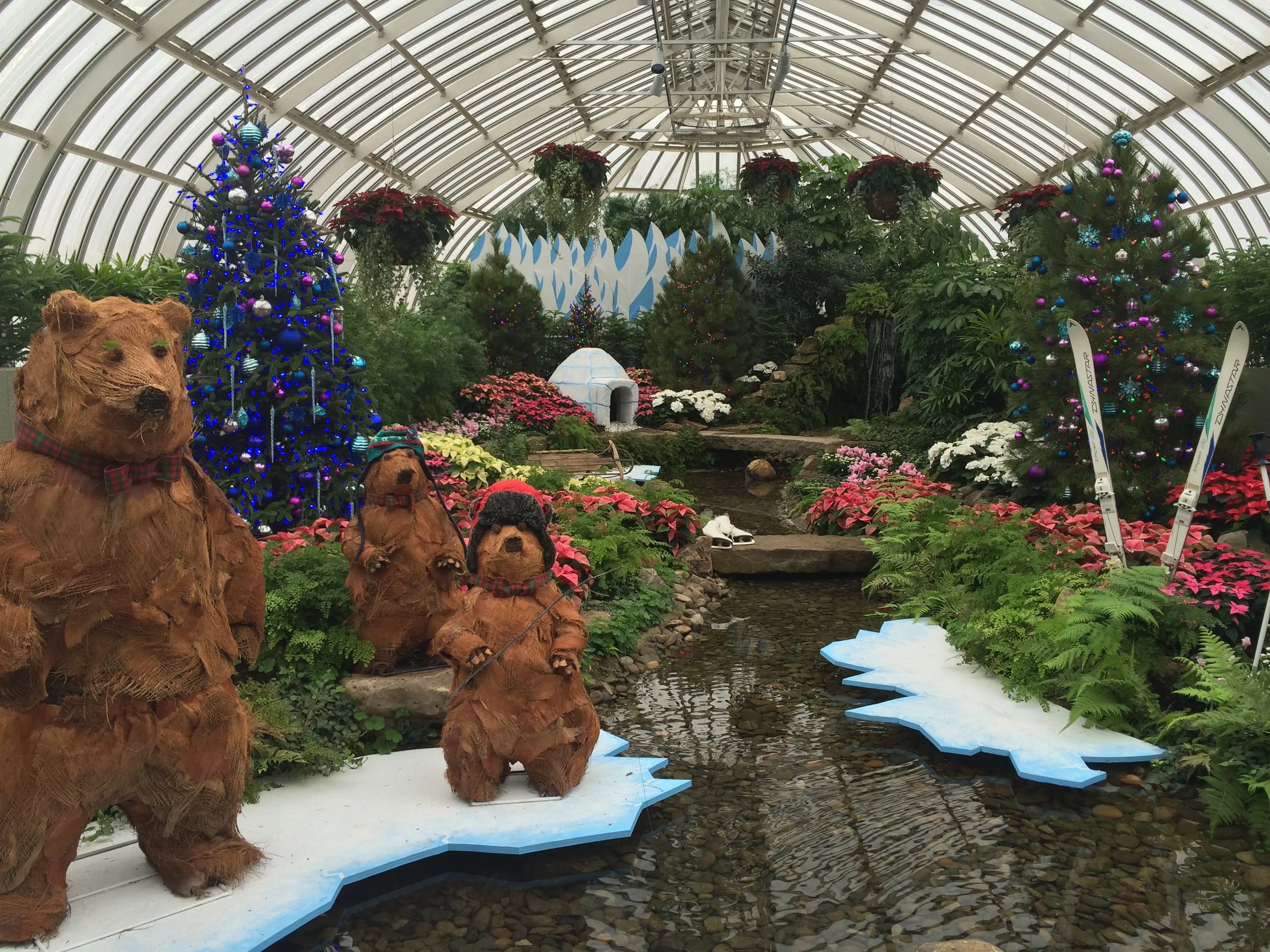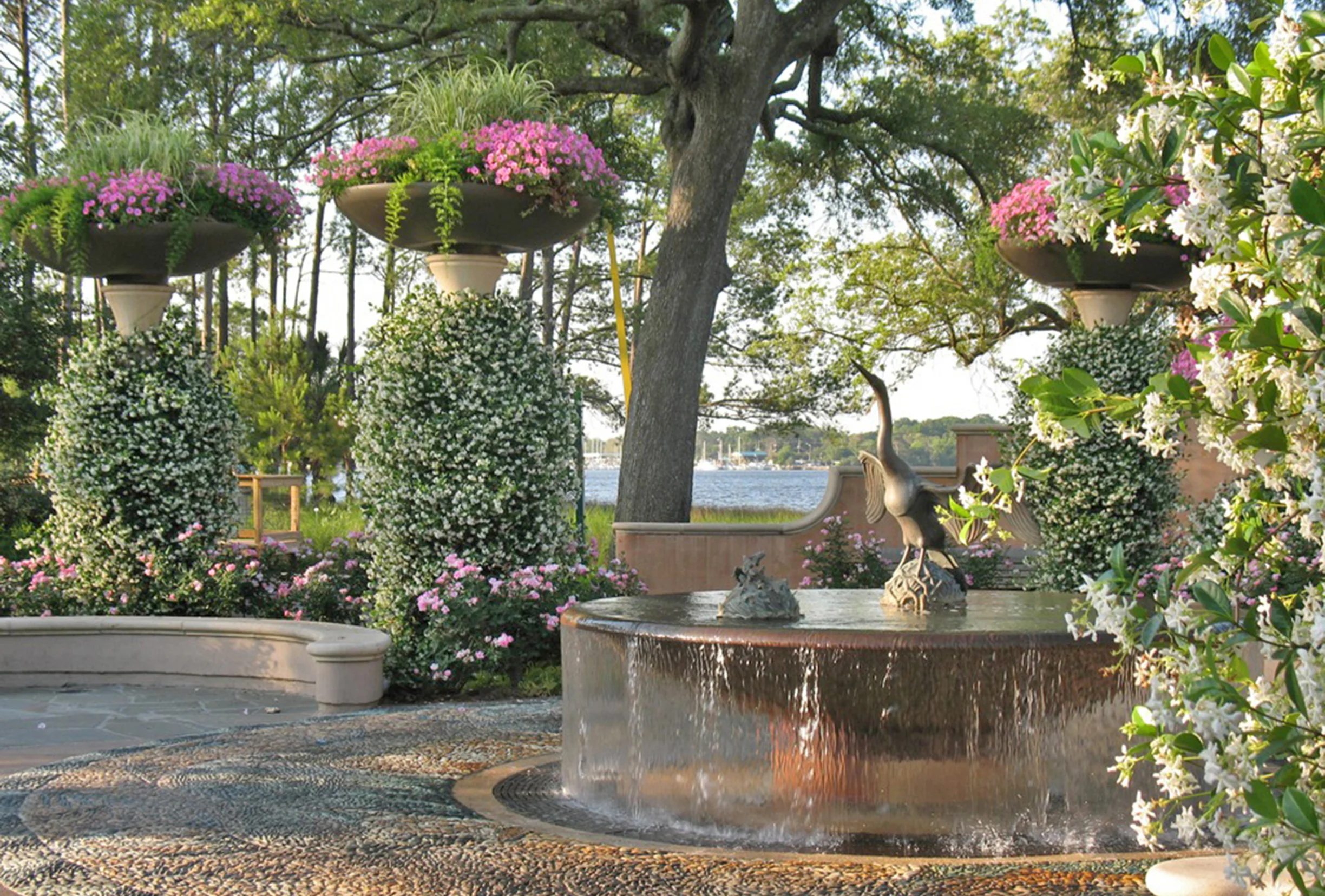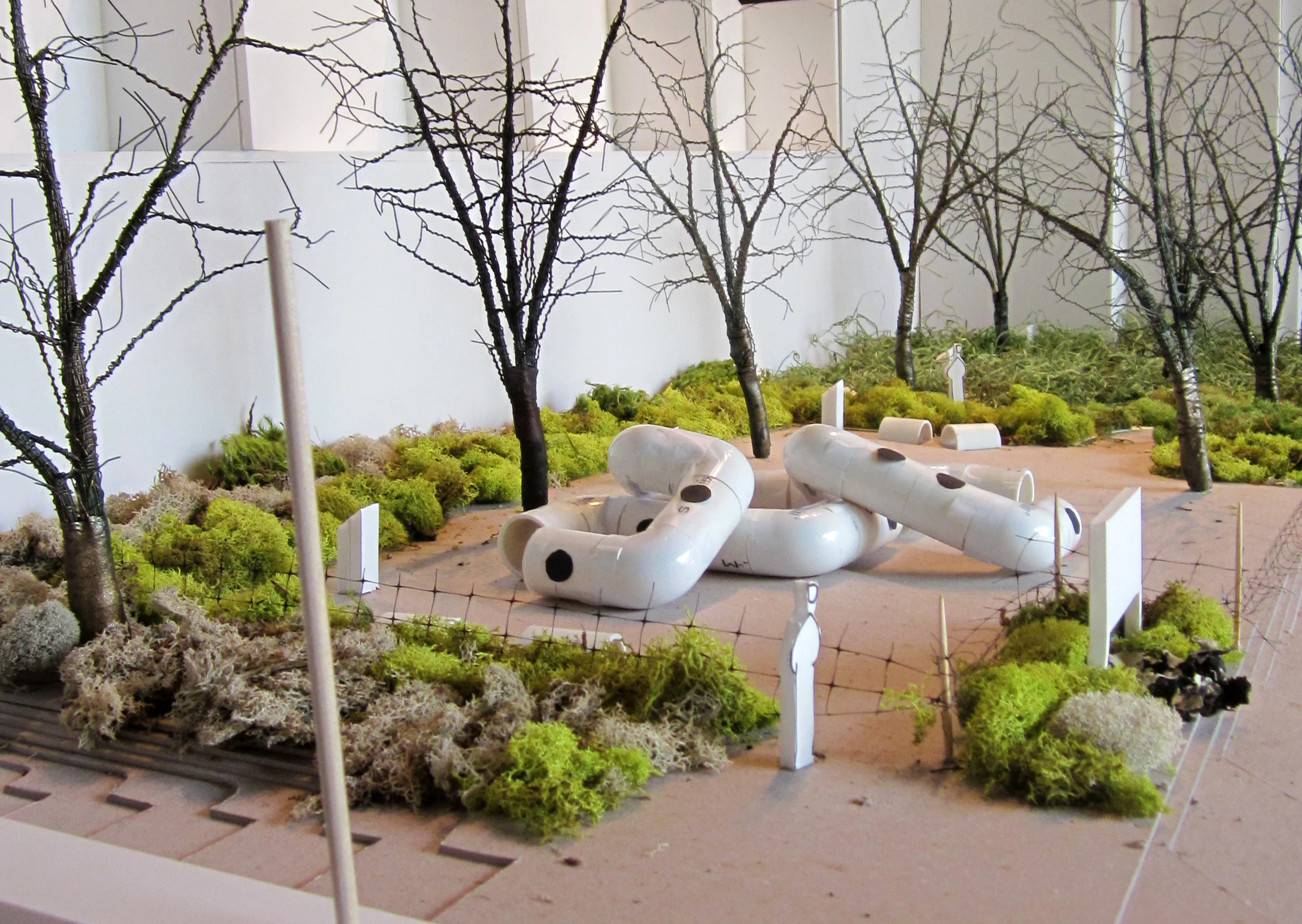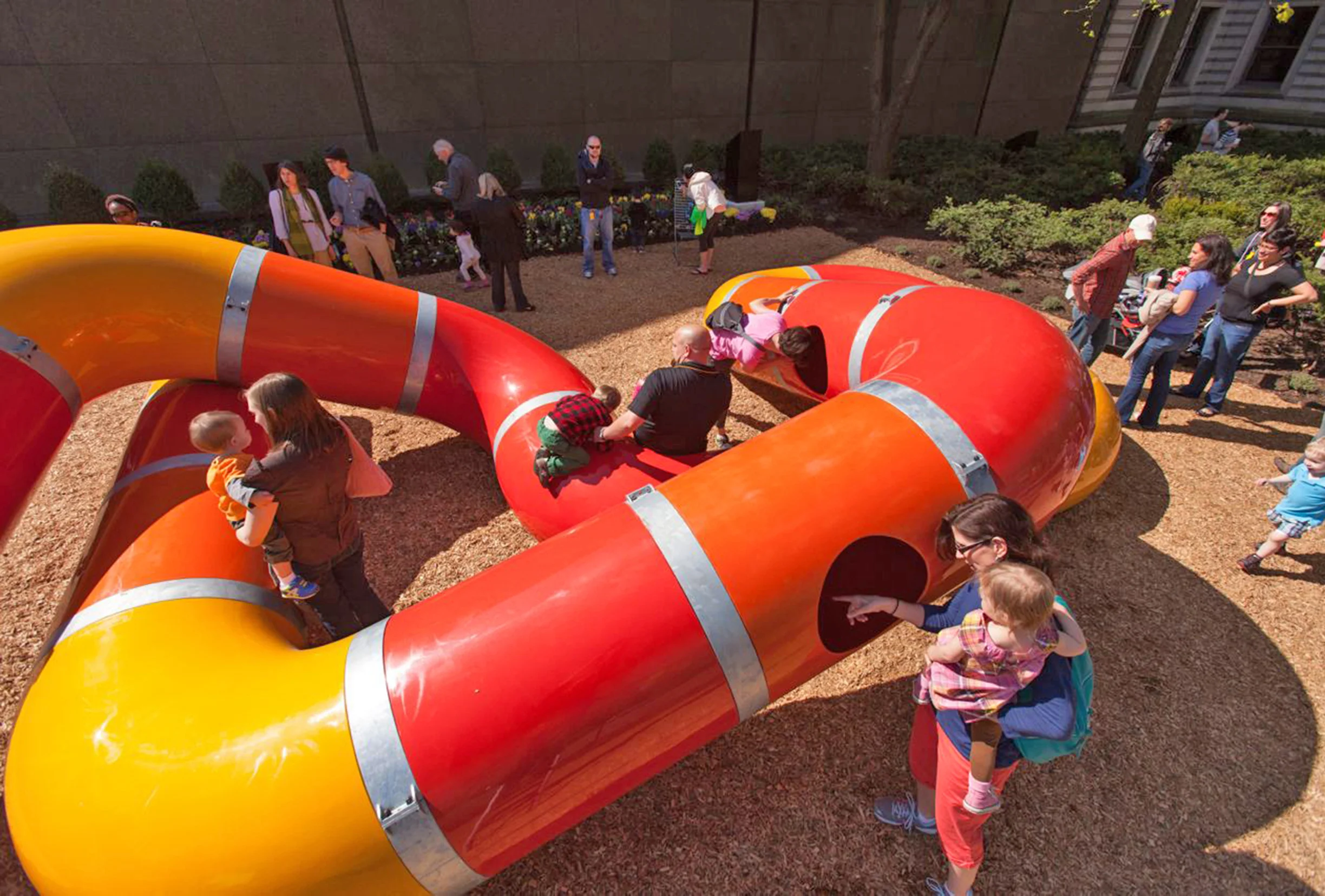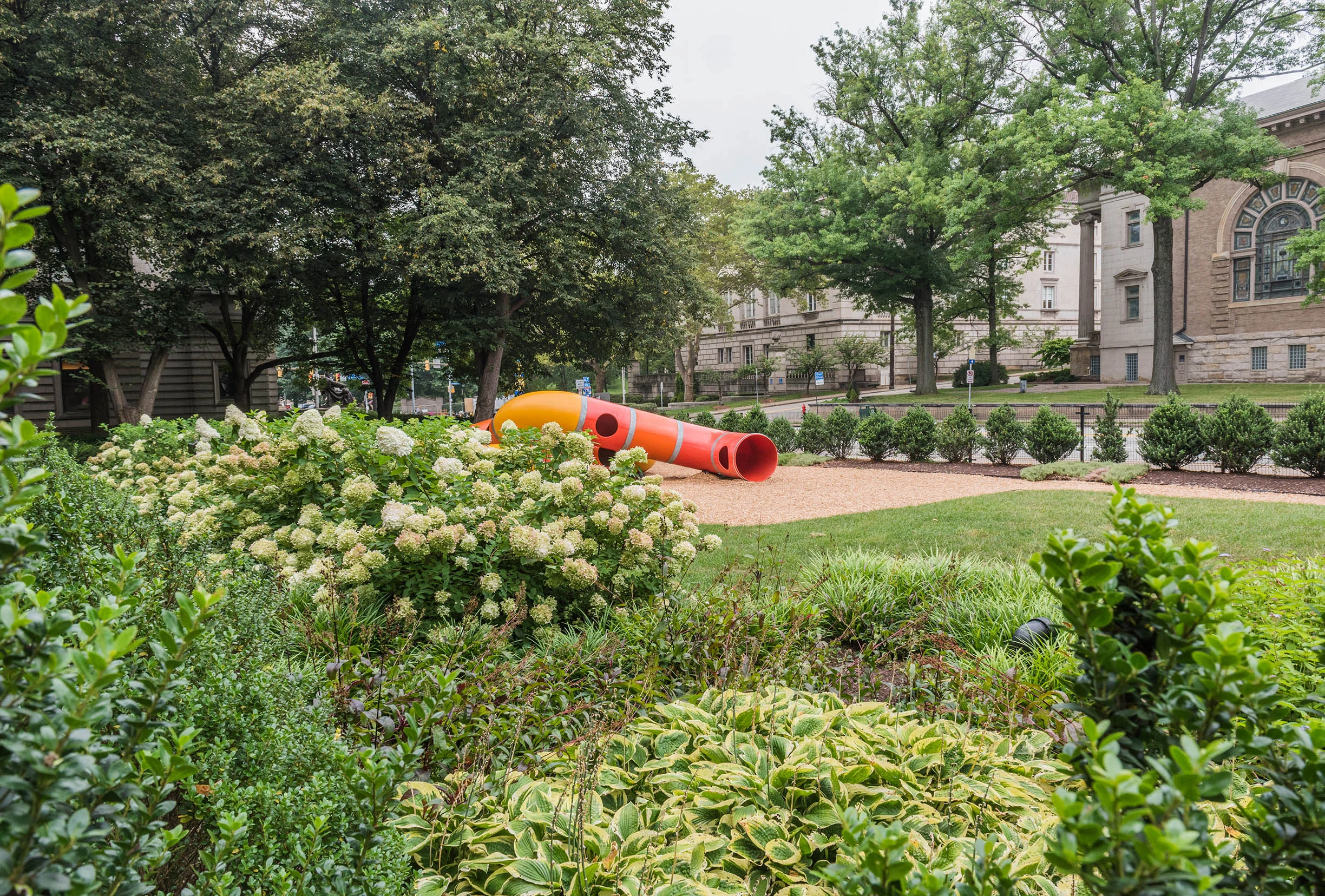Cultural Institutions
Our site designs strive to increase and diversify audiences while lengthening their stay at cultural heritage centers, libraries, museums, performing and fine arts institutions, zoos and aquaria. We design these spaces to complement the caliber of the institution while strengthening their messages.
GLASS CITY METROPARK - MINI-MAUMEE DISCOVERY PLAY NODE - Toledo OH
Glass City Metropark reclaims 70 acres of former brownfields along the Maumee River directly across from downtown Toledo. Metroparks Toledo is committed to providing public spaces where visitors can gather and build life-long connections to nature, and the Mini-Maumee water feature helps achieve several organizational goals by highlighting the poorly understood Maumee River and its associated watershed.
SmithGroup hired Terra in 2019 to lead the design of the Mini-Maumee water feature, one of seven major discovery play nodes in the Park. The Mini-Maumee consists of: a ½ acre interactive water feature with simulated rockwork surfaces that depict a scaled version of the Maumee River, its river communities and its four primary tributaries, the St. Marys, St. Joseph, Tiffin, and Auglaize Rivers; and, a ½ acre of naturalized plantings that recreate the Great Black Swamp ecology that dominated the area pre-European settlement. A ten-foot high waterfall wall and whimsical frog sculptures dramatize the headwaters of the tributaries, and the water features drain to the recirculating treatment system through the Frogtown Bridge which honors the historic and iconic Interurban Bridge in Waterville. The Mini-Maumee serves an important role as an interactive teaching tool that demonstrates the breadth of the Maumee River watershed, the largest feeding the Great Lakes basin, and how decisions by one community will affect all of the communities downstream.
The Mini-Maumee is under construction. Glass City Metropark is expected to be open to the public in 2023.
Renderings by: SmithGroup, https://www.smithgroup.com
MONTICELLO SCULPTURE GARDENS - Godfrey IL
Through its relationship with the Missouri Botanical Garden and with Terra's guidance, Lewis and Clark Community College created a campus distinguished by display gardens, and a major collection of outdoor sculpture. The Monticello Sculpture Gardens features twelve original commissions and acquisitions. As site designers, Terra was responsible for thematic coherence, sculpture siting, landscape design, and consultation on specialty lighting. The sculpture placement considered not only the viewing experience of each piece, but the creation and preservation of the important surrounding viewsheds of the campus.
The College’s collection of bronze sculpture by nationally renowned artists was developed thematically hand-in-hand with the creation of its Missouri Botanical Garden’s Signature Garden plantings. The gardens at the campus core relate the student’s experience to the Voyage of Discovery by Lewis and Clark, a theme which is expressed by Richard Hunt’s group of seven monumental works, "Crossroads". The core gardens are also enriched by "White Cedar" by Deborah Butterfield (pictured first), and “Sacagawea” by Glenna Goodacre. “Spirit of Survival” by Ruth Duckworth (pictured second), and an acquisition by Magdalena Abakanowicz (pictured third) grace contemplative gardens near campus ponds. Other gardens anchor works by John Medwedeff, Joel Perlman, and Peter Fagan.
PHIPPS CONSERVATORY & BOTANICAL GARDENS - Pittsburgh PA
Phipps Conservatory and Botanical Gardens is one of the few public gardens in the country to produce full-scale seasonal flower shows year-round. With each year that passes, continues a tradition more than 120 years strong. At Terra Design Studios, we believe every landscape has a story to tell, and it has been great fun designing these ephemeral displays with a storyline in mind. We work hand-in-hand with Phipps' events, horticulture, and marketing staff to bring a theme to life while supporting their industry-leading commitment to sustainability and healthy living. Our flower show commissions have been:
Holiday Magic: Let it Glow! (Winter 2018): Guests experience a new perspective while visiting each unique room. From rotating and floating trees, oversized ornaments that make you feel small again, dazzling ribbons and bows, and playful penguins, it’s easy to remember why it’s the most wonderful time of the year!
Holiday Magic (Winter 2017): Each room reflects a different aspect that makes the holiday season special. Vignettes include a winter feast, Santa’s workshop, a New Year’s Eve celebration and the Gift of Giving — a display that celebrates the idea that giving without expecting anything in return is something truly magical.
Snow Day (Winter 2016): Adults and children alike delight in playful vignettes of the fun that can be had on an unexpected day off, where snowball fights exhilarate and blanket forts rejuvenate.
Deck the Halls (Winter 2015): The Conservatory rooms are decorated with boughs of holly and Victorian-era elements, and refreshed with modern translations of this timeless carol’s traditional meanings.
Walking in a Winter Wonderland (Winter 2014): Snowmen topiary guide visitors on a journey through whimsical plant and prop arrangements inspired by imagery from the verses in this well-known holiday carol.
The Nutcracker (Winter 2011): Guests are transported back to the late 19th century as the Conservatory rooms were magically transformed into key scenes from the beloved tale. The Nutcracker Winter Show was also graced with vignette performances by the Pittsburgh Ballet Theatre.
JACKSONVILLE ZOO & GARDENS - Jacksonville FL
By developing a separate yet integrated botanical garden at the Zoo, the Jacksonville Zoo and Gardens has embarked on a botanical journey like no other zoological institution in this country. The master plan, led by Cindy Tyler while a partner with MTR, designates three garden zones within the Zoo: the Garden Path, a major linear garden display featuring Florida flora; themed Pocket Gardens which serve as botanical forecourts to animal exhibits; and the ten-acre Trout River Gardens, comprising themed display gardens with spectacular views of the tidal river - a perfect culmination of a garden visitor’s journey.
Subsequently, under the direction of Terra Design Studios, the Zoo has opened several gardens from the master plan. The Rivers of Color, African-Savanna Blooms Garden, Asian Bamboo Garden, and Hanging Gardens at Trout River Plaza have quickly become favorite gathering spots and wedding and event sites for the community.
Terra’s goal for the Zoo and Gardens has been to enrich the family experience by creating sensory excitement and opportunities to play and discover in horticulturally-rich settings, aided by interactive exhibits, water features, and commissioned art pieces to create a magical experience for young visitors. The Jacksonville Zoo and Gardens is the most visited tourist attraction in the area, with an average of a million visitors per year. The Gardens, honored with the Florida ASLA Award of Merit, have improved the Zoo's brand and increased attendance.
THE LOZZIWURM at CARNEGIE MUSEUM OF ART - Pittsburgh PA
The Carnegie Museum of Art expanded their contemporary outdoor art exhibits in anticipation of the 2013 Carnegie International with the Lozziwurm, a colorful and tubular sculpture designed by Yvan Pestolozzi in 1972. A popular feature of western European playgrounds for many decades, this is the first Lozziwurm installed in the United States.
Terra prepared a campus-wide master plan for the Carnegie Museums of Pittsburgh in 2012 and were retained for full design services for the Lozziwurm Garden, assisting museum curators to contextually site the sculpture and create a garden space to welcome children and families. The Lozziwurm Garden also completes an important goal of the master plan by creating a more open, vibrant and welcoming environment at the entrance to the Museum of Art.
The installation is part of The Playground Project, through the 2013 Carnegie International, which presents outstanding and influential playgrounds from the mid-to-late 20th century from around the world in order to open discussion about the way modern-day playgrounds are designed and utilized, particularly regarding how we approach childhood, risk, public space, and education.
The Lozziwurm Garden is now a permanent fixture at the museum, free of charge during museum hours.







